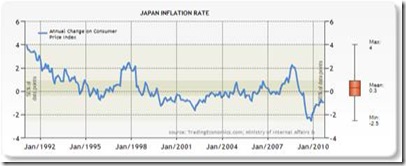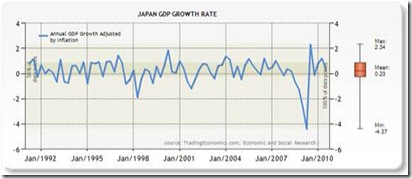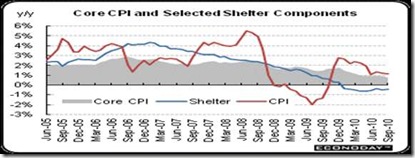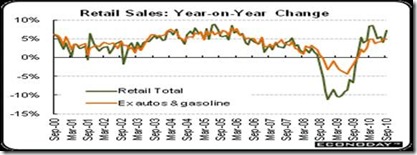Fed Chairman Ben Bernanke in his most recent speech said that more Quantitative Easing may be necessary, in order to comply with the Fed’s longer-run sustainable rate of unemployment and the mandate-consistent inflation rate. The longer-run sustainable rate of unemployment is the rate of unemployment that the economy can maintain without generating upward or downward pressure on inflation. .
Bernanke maintained, “The longer-run inflation projections in our Summary of Economic Projections (SEP) indicate that FOMC participants generally judge the mandate-consistent inflation rate to be about 2 percent or a bit below. In contrast, as I noted earlier, recent readings on underlying inflation have been approximately 1 percent. Thus, in effect, inflation is running at rates that are too low relative to the levels that the Committee judges to be most consistent with the Federal Reserve's dual mandate in the longer run.”
Why such a fear of too low inflation? Because it stymies growth. If prices are stagnant, then so are wages. And stagnant wages mean stagnant consumer spending, which leads to job layoffs in the highly competitive global economy.
Bernanke’s fears are well-known on this subject, as he has studied the lost decades of the Japanese economy, as well as our Great Depression. The Japanese recession and deflationary spiral was caused by the bursting of both its stock market and real estate bubbles. And it has never recovered from the resultant deflation.
U.S. Headline inflation at the consumer level since 2008 is eerily similar. Although September’s positive retail sales report should have made the Fed happy, the CPI numbers will have the Fed still worried about inflation being too low. Year-on-year, overall CPI inflation slipped to 1.1 percent (seasonally adjusted) from 1.2 percent in August. The core rate in September edged down to 0.8 percent from 1.0 percent the prior month. The core year-ago pace is the lowest since February 1961 when it stood at 0.7 percent.
The downtrend in the core has been heavily dependent on low inflation or even deflation for the shelter component as fallout from the depressed housing market. On an unadjusted year-ago basis, the headline number was up 1.1 percent in September while the core was up 0.8 percent.
A good sign for growth is that overall retail sales in September advanced 0.6 percent, following a 0.7 percent gain in August (revised up from 0.4 percent) and a 0.5 percent increase in July (previously 0.3 percent). Although auto sales led a September gain, strength is broad based.
The gain in September was led by motor vehicle sales and electronics & appliance stores, up 1.6 percent and 1.5 percent, respectively. On a positive note, there actually has been notable improvement in housing related components with furniture & home furnishings and building materials & garden equipment rising for three consecutive months.
The bottom line is that rising inflation is a sign of rising demand, whereas falling inflation—or deflation—is a sign of stagnation, or recession. The Fed is accomplishing two immediate objectives by keeping interest rates at rock bottom. The cheaper dollar stimulates exports and so jobs in domestic export industries such as aircraft, at the same time subsidizing record low mortgage rates, thus stabilizing home prices. We hope that businesses get the message. It is better for them to invest in the potential for growth than sit on hoards of cash earning zero interest.
Harlan Green © 2010





No comments:
Post a Comment